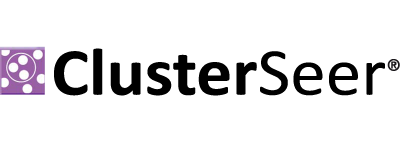

Clusters of disease, such as leukemia or breast cancer, can be caused by environmental factors, or they can arise by chance. How can we tell whether an observed cluster is real? Use ClusterSeer. ClusterSeer‘s state-of-the-art methods allow you to determine whether a cluster is significant, where it is located, and when it arose, providing insight into the origin, causes, and correlates of disease.
ClusterSeer evaluates whether disease clusters occur near a presumed source of risk, or it locates clustering without a known focus. Determine the significance of a cluster, where it is located, and when it arose.
ClusterSeer offers statistical methods not currently available in any other software. It can be used alone, or in conjunction with BoundarySeer for an even fuller perspective on your data.
ClusterSeer was developed at BioMedware, using grant funding from the National Cancer Institute. These grants were awarded through scientific peer review, validating the relevance and innovation of our approach.
ClusterSeer brings cluster detection software up to date. No other clustering product provides multiple comparison adjustments, as many cluster detection methods, nor any set of methods as current.
| Cluster Detection methods
Spatial Clustering Foucsed Temporal Clustering |
Results Visualization
Maps |
| Technical Spec
Import file formats |
Expert Knowledge
Cluster Advisor |
| Advanced Statistical Methods
Multiple Comparison Adjustment |
ClusterSeer evaluates whether events occur near a presumed source of risk, or it locates clustering without a known focus by providing state-of-the-art statistical methods for assessing event clusters in space and time.
ClusterSeer contains 24 methods, including 15 additional spatial, temporal and spatial-temporal clustering methods, along with the ability to save project sessions, import DBF files, export images, and load in data to supplement your maps. The most comprehensive cluster software available, ClusterSeer contains updated versions of all the methods previously found in Stat!.
ClusterSeer can be used alone, or in conjunction with SpaceStat or BoundarySeer for an even fuller perspective on your data.
ClusterSeer was developed at BioMedware, using grant funding from the National Cancer Institute. These grants were awarded through scientific peer review, validating the relevance and innovation of our approach.
ClusterSeer requires the following Windows Operating Systems:
Windows 95 or Windows NT 4.0 or more recent operating system
Screen resolution of 800 x 600 or finer for best viewing of the maps and graphics
256 colors or better highly recommended for graphics
15 MB hard drive
128 MB RAM (minimum), 256 MB RAM (recommended)
P3 500 MHz (recommended) Processor Speed
© Copyright 2004-2025 BioMedware
Software che utilizza metodi avanzati per la determinazione della significatività statistica di un cluster, della sua collocazione geografica, e del momento in cui si è manifestato. Permette di comprendere le origini, le cause, e le correlazioni tra malattie.

